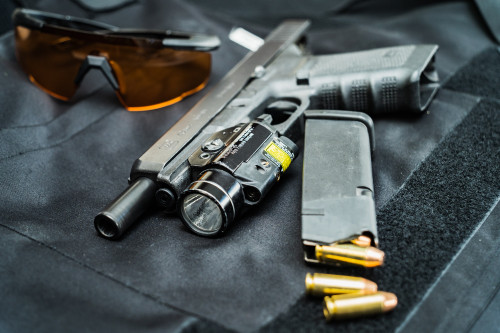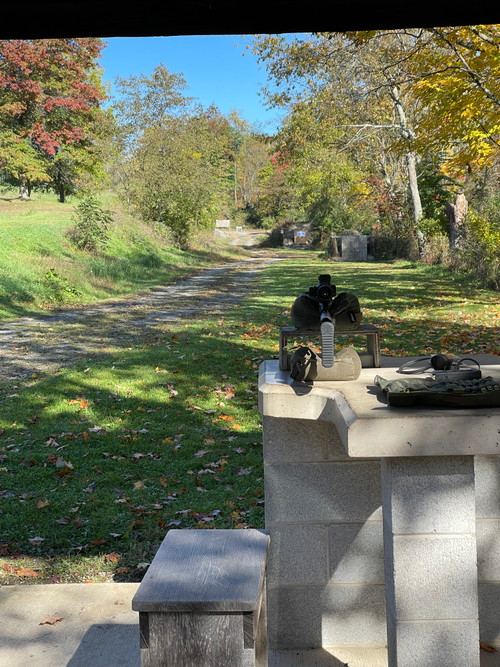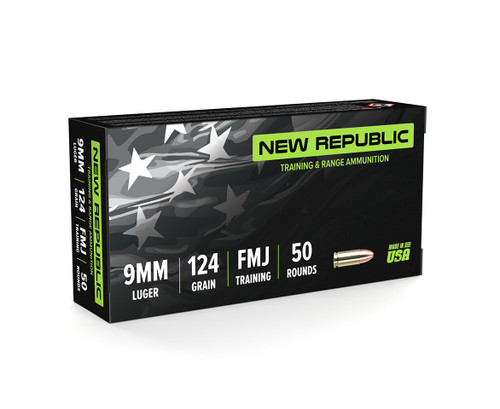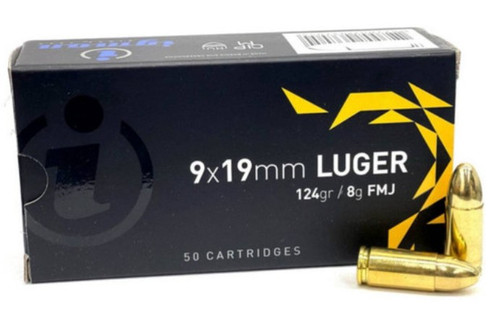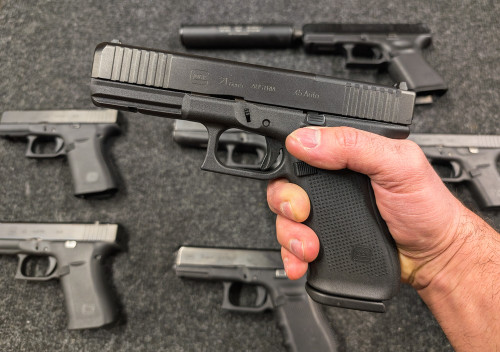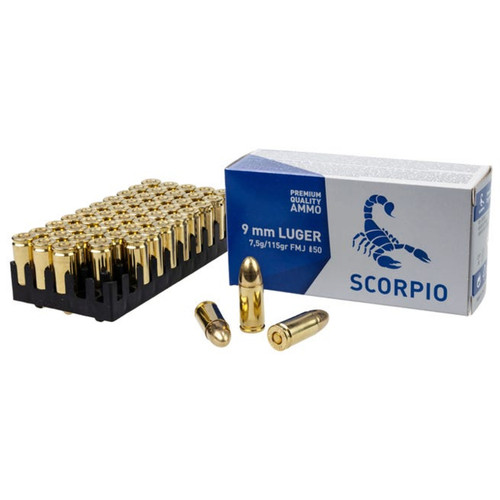So, you want to get an AR-15. The first question: should you buy it or build it yourself?
Few other topics stir up more debate on the various firearm forums, social media channels, and chat platforms than this one. With the modular nature and standardized specifications of the AR platform, purchasing each component with careful analysis and thought can be very rewarding. From triggers, to lower receivers, to barrels, to weapon-mounted lights, to magazines, you can select each component to suit your individual tastes and desires.
However, the process can take time and effort, and does require the purchase of some additional tools. Also, even if you have a deep knowledge of firearms, you may not have the skill or manual dexterity to assemble a safe and functional AR-15. In that case, it may be more appropriate to purchase a complete rifle from a reputable manufacturer.
Along those same lines, it is worth mentioning that for a first-time AR-15 purchaser, the safest and easiest course is to acquire a factory-built complete rifle. With that caveat out of the way, we will take a deep dive on buying versus building an AR-15.
Purchasing an AR-15 From a Manufacturer: Pros & Cons
Walking into your local firearms retailer, the first thing you may notice is that the walls are literally covered with AR-15s these days. From larger manufacturers such as FN, Colt, Smith & Wesson, and Bushmaster, down to more boutique firms such as LMT and Knight’s Armament, lots of companies are making quality AR-15s for purchase.
There’s a reason that the AR-15 is nicknamed “America’s Rifle”. It’s intensely customizable and versatile with several variations of the design already on the market. Chances are, there will be an AR-15 that suits your tastes in terms of features, ergonomics, and price point as well. State laws depending, you can most likely walk out the door with a functional and quality AR-15 the same day you pay for it. This is the quickest route to getting yourself equipped and ready with an AR-15 of your very own.
While this is a perfectly viable option for obtaining your own AR-15, there are pros and cons to this approach you’ll want to consider.
Pro: It’s Built and Tested To Be Reliable
When you purchase an AR-15 from a reputable manufacturer such as FN, Colt, Smith & Wesson, Daniel Defense, or LMT, you can have a reasonable expectation of quality and support. Companies like these hold law enforcement and military contracts from major agencies throughout the world. Professionals employed by the agencies put a huge amount of trust in the weapons produced by these companies, since a malfunction can literally mean the difference between life and death.
Aside from restricted components (i.e. the parts and machining needed to make an AR-15 into a machine gun), the ARs produced by these firms are held to the same standards of quality control as their law enforcement and military weapons. So, you can be assured that your purchase will stand up to hard use.
An AR-15 produced by a manufacturer will usually be subjected to industry-standard tests. From checking the fit and finish of each part and assembly, to test firing each individual rifle before shipment, the manufacturer goes to great lengths to ensure reliability. Often, they will “proof test” critical components of the AR-15, subjecting the parts to conditions well in excess of anything encountered during regular use.
Pro: It’s Guaranteed To Be Legal
A factory-made AR-15 will ship to a local firearms dealer in a configuration that is legal for that given jurisdiction. While in most cases this means your rifle will be similar to the rifles shipped to 41 other states in the Union, this is an advantage if you are in a restrictive jurisdiction such as California. The rifle will be compliant with California law (i.e. compliant magazines and no pistol grip), so you don’t have to worry about being shipped a contraband firearm.
Pro: It’s Still Customizable
An AR-15 from a manufacturer can serve as the “base” configuration for your customization concept. You can start out with a basic AR-15 from one of the major manufacturers, and swap out/accessorize your rifle with quality components as time goes on. For example, you can modify a basic AR from Smith & Wesson into something truly unique, with optics, lights, stocks, and grips to meet your needs. The modular and standardized nature of AR-15 parts and accessories often makes simple upgrades an easy and painless process.
Pro: It Saves Time
It may seem obvious, but buying is much faster than building an AR-15. If you’re looking to arm yourself for an upcoming hunting trip or you’re concerned about a more immediate self-defense situation, buying is certainly the way to go. Just stop by your local gun store, purchase your favorite AR-15 off the rack, and you’re ready to start shooting.
Con: Quality Can Vary
Like any mass-produced product, the quality of factory-produced AR-15s can vary from manufacturer to manufacturer, and even rifles made by the same firm can have differences in quality. Your friend may have a grade-A rifle from Colt, while your Colt AR-15 may have cosmetic and functional issues. Always do your research first.
Acquiring a factory-made AR-15 may be difficult during the seemingly inevitable buying panics that happen around federal election years and other notoriously trying times. You may find yourself wanting an AR-15 in case it becomes more difficult to get one because of legislation, only to find everyone else has the same idea.
Furthermore, when there’s a panic, manufacturers turn up the dial on production, often running their factories around the clock. This can lead to quality control issues (e.g. an AR-15 made and checked during the graveyard shift at a factory may be more prone to malfunctions than one produced during the day). Regardless of these circumstances, a name brand manufacturer will stand behind their products and “make it right” if needed.
Major manufacturers may cut corners to save on costs and time. Sometimes it is for a valid reason. For example, a military-specification AR-15 trigger usually has a pull weight of 6.5 pounds. Military-spec triggers are produced cheaply and in great numbers, and may “do the job” for you. However, occasionally a manufacturer will cut corners in less obvious ways, such as using lower quality raw materials for components. You may not notice this until it becomes apparent that a critical component, such as the bolt carrier group, shows signs of premature wear. That part would have to be replaced sooner.
Con: It Won’t Be Completely Unique
If you aren’t building your AR-15 from scratch, you are buying it in a configuration and form that is already standard. Of course, this may not matter to you. You might just need a good AR-15 to use right away. However, if you are looking to build your own truly unique firearm, buying one off the shelf obviously won’t give you that outcome. It’s your choice: buying it is easy, but building it is also pretty cool.
Building an AR-15 From Individual Components: Pros & Cons
Whether it’s at your local firearms retailer or online, you are bound to notice a whole universe of AR-15 components and accessories available. At first glance, it can appear as if you could build your dream AR-15 piece by piece with ease. The truth is, you can. Crafting your own firearm is a tradition older than the United States itself. Hardy colonists would source barrels, stocks, triggers, and other components to build a weapon to call their own.
Fast forward a few hundred years, and you have the opportunity to continue the legacy by crafting your own AR-15. At first, the challenge of assembling your own firearm may seem daunting, but with a little research and knowledge, it can be done. Of course, the modular nature of the AR-15 makes the task easier, but the process is not without its own pros and cons, both technical and legal. Here are some things to consider before going the “build” route.
Pro: Own Your Customization
Of course, the most compelling reason for you to construct your own AR-15 is customization. From the trigger, to the receiver, to the furniture (stock, handguard, grip) and beyond, you can craft the ultimate rifle customized to your needs. Want an anodized red handguard? They’re out there. Want a minimalist stock? Many manufacturers make them. Left-handed? There are fire control groups, charging handles, and upper receivers made just for you southpaws.
Pro: Improve Performance
Selecting each component individually can enable you to achieve remarkable gains in accuracy, speed, durability, and performance. The caveat of course is that your fundamentals need to be on point, but by hand-selecting quality components and accessories, you can get that prized goal of sub-MOA accuracy at 100 yards or more. You can even dive as deep as selecting individual pins and springs based on materials and composition.
For example, a mil-spec buffer spring from a no-name manufacturer will last around 10,000 rounds before it may exhibit problems, whereas a Sprinco buffer spring made from heat-treated and shot-peened chrome/silicon wire stock will last well in excess of 50,000 rounds (pretty much forever).
Pro: Educate Yourself
Assembling an AR-15 from individual components and accessories is truly an educational experience. If you like tinkering with things, this is an enjoyable way of getting a quality firearm. You’ll learn about trigger pull weights, barrel twist rates, forged versus billet receivers, barrel chamber types, muzzle devices, component coatings, grip angles, lumen output of weapon-mounted lights, and more in the course of assembling your AR-15.
Pro: Build at Your Own Pace
It’s no secret that venturing into the world of firearms can be a little expensive. A quality factory-built AR-15 can easily run well north of $3000, just for the weapon itself. Add in optics and fun stuff like suppressors, and you’ll easily double that price tag. However, with some planning, research, and knowledge, you can spread the cost of a truly awesome rifle over the course of several months or even years. Purchasing components and accessories over time lessens the impact on your bank account. It’s like setting up your own custom payment plan without being beholden to banks or interest rates. Plus, if you’re married, the purchase will have an easier time clearing the budget committee (aka your spouse).
Con: You Need Special Tools
The AR-15 is noted as a modular firearm platform. While to be fair, you can buy complete lowers and complete uppers and “assemble” an AR-15 in about three minutes with the push of two pins, truly constructing an AR requires an investment in time and tools. At the minimum, you will need items like armorer’s wrenches, vise blocks, a vise grip, reaction rods, and roll pin punches. You’ll also need a dedicated workspace and common hand tools to build an AR-15 that is functional and safe. An AR-15 that’s assembled haphazardly can put you at risk of serious injury or death.
You will also need to educate yourself on the proper assembly procedures. You can have quality components and the requisite tools to put together an AR-15, but no idea on how to actually do it. There are numerous sources on and offline on how to assemble an AR-15 from individual components, but it can be time-consuming to vet those sources and embark on the process of actually building your weapon.
Con: Parts Can Be Hard To Come By
Much like with complete rifles, AR-15 components are subject to the vagaries of market forces. A buying panic can have component manufacturers running low on inventory. Furthermore, a lot of component manufacturers are OEMs for the “big names”. For example, Toolcraft is a major manufacturer of well-regarded bolt carrier groups. You can acquire a Toolcraft-branded BCG from many retailers, but Toolcraft will prioritize supplying their “big” customers and contracts first, leaving you high and dry.
Con: Custom Builds Don’t Have a Full Warranty
If something goes wrong with a standard AR-15, the manufacturer will remedy the issue, provided you were using the weapon as intended. In these cases, you’ll probably get the whole gun replaced with little effort.
However, with an AR-15 built from components, it’s up to you to determine which part failed, and why. A component manufacturer may try to blame the ammunition used, the trigger, etc. Also if a malfunction damages multiple components, the manufacturer will only replace the part that actually failed (assuming it’s covered by a warranty). If an out-of-spec bolt carrier group (BCG) causes an out-of-battery detonation (a round going off outside of the chamber) and wrecks the upper receiver, the manufacturer of the upper receiver won’t cover that part. They will instead tell you to take it up with the manufacturer of the BCG.
Con: Your Build Might Be Illegal
While an AR-15 purchased at retail from a major manufacturer will be compliant with federal and state laws concerning firearms, your AR-15 built from individual components can easily run afoul of those laws.
To clarify, the only part the government cares about is the completely milled and finished lower receiver of the AR-15. When a customer purchases a lower receiver for an AR-15, a background check is performed, just like if the customer was purchasing an actual firearm. However, all other parts are not subject to the same process. While online retailers warn that it’s up to you to ensure compliance, they will allow the purchase of the unregulated components to proceed.
For example, unless mounted to an AR-15 pistol, a 10.5” barrel for an AR-15 rifle requires that the procedures for NFA-controlled items be followed (i.e. taxation and registration). Even having the components (unassembled) to build an AR-15 in a short-barrel configuration can land you in legal hot water, i.e. constructive possession. Without research and due diligence, you could unknowingly commit a federal crime.
In a similar vein, building an AR, then using that AR in self-defense typically increases the hardships you will face in court to clear your name of any charges. Building your own rifle is fun, and using it for sports is okay. But if you depend on your custom-designed AR, you could be asking for trouble if you use it for home defense. It’s unfortunate, but it is the way things go sometimes.
How To Build an AR-15: A Quick Guide
If you’re convinced that building an AR-15 is the way to go, you’re in for a treat. While you’ll certainly want to do your own research to build correctly (and legally), here’s a general guide to help you get started on the journey:
Step One: Determine Use Case and Acquire Components
Are you building an AR-15 for target shooting, hunting, or defense? Once you’ve made that decision, select a lower receiver, which is the part that essentially connects all the other components of the AR-15 together. Remember that the lower receiver is the only part of an AR-15 that is considered a firearm by United States law. Everything else is considered an accessory. However, in order to legally obtain even this piece, you will need to undergo a quick background check through the licensed dealer (online or in-person) who is selling the specific lower receiver you want to purchase.
From there, you can select critical components like the bolt carrier group, the barrel, the trigger, the upper receiver, and so forth. Don’t forget accessories like muzzle devices, weapon-mounted lights, magazines and the like, as well. Spend most of your budget on any component that is subject to the explosive force of a projectile being fired. Remember to order any tools and lubricants needed to safely assemble and operate your AR-15.
Step Two: Carefully Assemble Your AR-15
To properly assemble your AR-15, you’ll need a specific set of tools, including such items as:
- AR-15 armorer’s wrench
- AR-15 lower vise block
- AR-15 upper vise block
- AR-15 hammer & punch set
- Vise grip (sometimes listed as vise clamp)
- Allen wrench
- Screwdrivers that may be specific to a part (e.g. Torx)
- AR-15 reaction rod for barrel work
- Loctite (threadlocker) red and blue
- A proper workbench
- Alignment rod (only if you are adding a suppressor)
While some builders certainly make do with less, this tool set will ensure you are completely prepared to build your AR-15 safely and securely.
After acquiring all of your AR-15 parts, accessories, and assembly tools, set yourself up in a dedicated workspace to precisely and safely assemble your AR-15. Prior to this, you should have researched the proper assembly and installation procedures. While the process itself is relatively simple for anyone who can follow directions, it can be easy to miss installing something as seemingly innocuous as a pin, which can lead to malfunctions and even catastrophic failures. Prepare to spend some time getting everything properly put together.
Step Three: Lubricate, Check and Dry-Fire Your AR-15
Once assembled, lubricate all working surfaces of the rifle, and then give your newly-finished AR-15 a quick functional check by doing some dry-fire practice. Triple-checking that there is no ammunition present in the firearm or in the workspace, load your new build with a cheap pack of plastic dummy rounds (or snap caps, if you choose) in the correct caliber for your chamber. These will chamber but not fire like the real thing. Then, follow these steps:
- Check that the fire control selector (safety) is functional. With the rifle on SAFE, try to press the trigger.
- Moving the safety selector to FIRE, check to see that the trigger functions properly.
- Work the charging handle to ensure the buffer spring, buffer, and bolt carrier group move properly.
- Check each component for fit and finish as well. If you are new to building an AR-15, you may want to have a more experienced friend on hand to check your work.
Step Four: Test Fire Your New AR-15
Now, for the moment of truth — it’s time to really run your new creation. With a few magazines full of quality factory ammunition (making sure it’s the right kind), head on over to your favorite local firearms range. For this first test, you may not want to have any extraneous or high-value accessories attached like optics, lights, or lasers. You’re just looking to make sure your AR-15 can successfully and repeatedly run a firing sequence. Note, you can regard the firing of the first few hundred rounds as “breaking it in.” Your new build will find its groove after that.
Step Five: Customize Your AR-15 With Accessories
Once you’ve verified your new creation is running effectively and safely according to your use case and specifications, you’ll want to start outfitting it with some accessories to really make the most out of your custom-built AR-15. A quality red dot sight will enhance your target acquisition speed and precision. A weapon-mounted light is an essential defensive accessory — you want to clearly see your target and its background. Of course, you’ll also want plenty of extra magazines and ammunition to keep your new baby fed and happy!
Special Considerations When Building Your AR-15
While the process of building an AR-15 is basically a technical and mechanical affair, your use case may have special considerations. Usually these are of a legal flavor, but there are practical considerations to weigh as well.
Considerations for 80 Percent and 3D-Printed AR-15 Builds
Currently, leading the way in the Second Amendment community is the innovative and fast-growing 80 percent and 3D-printed AR build scene. Except for components that take the brunt of the concussive force of a round being discharged, AR-15 components can be printed over the course of a few days (assuming you have some basic computer skills, a $250 3D printer, and the normal tools required to assemble an AR-15).
Along the same lines, an 80 percent lower receiver (a lower that is only “80 percent” complete, usually shipping with no pocket for the trigger and fire control group) can be finished if you have some talent for machining metal or carving plastic.
NOTE: In several states, 80 percent lowers cannot be sold directly to you as a civilian. Rotten luck. Also, as of this writing, court injunctions at the federal level are in place permitting certain companies to continue selling 80 percent lowers directly to civilians. This is despite a controversial White House executive order restricting them to FFL (gun shop) sales. Along the same lines, 3D-printed firearms are illegal in several jurisdictions. It’s up to you to keep up with any changes in the laws.
Counterfeit and Low-Grade AR-15 Components
It may surprise you, but there is most definitely a notable amount of counterfeit AR-15 accessories and components out in the wild. Often, these components will have no identifying logos or marks. Even worse, some have the logo of a well-regarded component manufacturer etched onto them (fraudulently). Almost always, these components are made to less-than-exacting standards, using inferior raw materials and imprecise manufacturing techniques.
Occasionally, these counterfeiters will even rebadge Airsoft components and pass them off as components for real AR-15 firearms. At best, the components will wear out quickly. At worst, they will fail spectacularly and pose a serious safety hazard to you, the shooter. In general, these parts are sold via social media channels, low-quality websites, or online marketplaces where moderation is more of a user task (i.e. the site owner only removes listings if they are reported).
Basically, if the price seems “too good to be true,” it probably is. It’s best to play it safe and only shop at reputable outlets.
Buy Or Build: It’s Your Choice
Purchasing a factory AR-15 or building one from its component parts is a decision that is ultimately up to you, the gun owner. The choice you make depends upon your own particular scenario. Here are three of the most common:
- If you are a new gun owner and just want to acquire a quality AR-15 with included customer support, it’s best to just simply buy a complete model, preferably from a larger manufacturer with a positive reputation in both citizen and professional circles. Manufacturers such as FN, Colt, Smith & Wesson, and Aero Precision should be on your shortlist. These and other manufacturers offer AR-15s in many configurations, one of which may suit your needs.
- If you are looking for something more specific and tuned to your needs in an AR-15, or are looking to spread out the costs of a more expensive firearm, building your “dream AR” is the best option. With careful research, patience, and skillful sourcing, you can construct something to truly call your own.
- If you are mechanically inclined and spend your spare time tinkering with machinery and devices, building your own AR-15 can be a truly enlightening and enjoyable experience.
Need to purchase some of the best AR-15 accessories for your existing factory-built rifle, or that dream build you’re working on? Get some top-quality AR-15 accessories from some of the best brands around at Pro Armory. We also offer firearms training to help you learn key techniques like cleaning your gun, clearing jams, improving accuracy, tactical maneuvers, and more. Sign up for our newsletter to get notified when our firearms training course officially launches.






